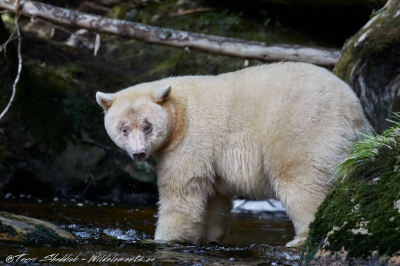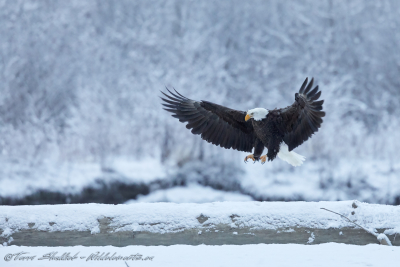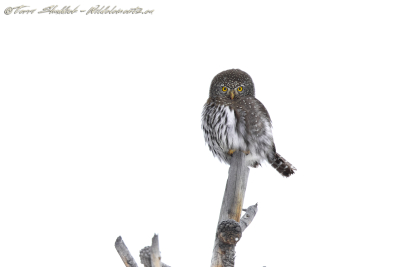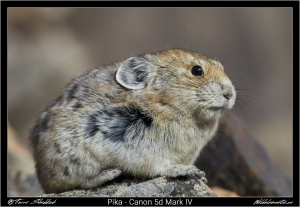02 Feb Canon 5D Mark IV – Not Just for Landscapes
Notice: Trying to access array offset on value of type bool in /var/www/wp-content/plugins/bridge-core/modules/shortcodes/shortcode-elements/_social-share/templates/social-share.php on line 124
Back in August when Canon announced that it was releasing the 5D Mark IV, and one of the first specs that I saw that it was going to be 30 megapixels, my first thought was, why do I need that, it’s just a landscape camera. While I wish I was a better landscape photographer, I just haven’t had the time to focus on it, and instead been working on wildlife photography. Seeing that the 5D Mark IV was going to be 30 megapixels, I was worried that it might not actually be usable as a wildlife camera, or I would be tethered to a tripod the entire time (which is as likely as me switching focus and only photographing people…haha).
Nevertheless, I decided that I would get the 5D Mark IV to try it, and if I decided that I didn’t want to keep it I would just sell it, because it was cheaper than renting one for the amount of time that it takes to really get a feel for the camera.
The first trip that I had the camera was the Great Bear Rainforest, however since it was pretty new to me, I didn’t use it a lot, because I still wasn’t that familiar with the image results when it was handheld, and how camera shake would impact those tiny pixels. I also brought the camera along to photograph Bald Eagles in Haines Alaska as my backup camera, and used the camera quite a bit more.
Since I’ve purchased the camera, the more I use it, the more I’m liking it. While it’s no 1DX Mark II in terms of speed (with auto focus and frames per second), the image quality is outstanding. It is also a great walking around camera, because it’s considerably lighter (without the grip) than the 1DX Mark II.
Can it be handheld?
As I mentioned above one of my biggest concerns with the 5D Mark IV was with 30 megapixels squeezed into the sensor would it be a scenario where it would need to be shot from a tripod the entire time, because any camera shake would be noticed due to the smaller pixel size. I’m not a tripod shooter, I will use one when it’s convenient, however it’s impracticable to use from a zodiac (where we shoot from on a lot of the trips), and also find that it can be quite restricting for animals that move a lot.
I’ve had absolutely no problems hand-holding and getting excellent results with the 5D Mark IV. The images have been sharper than compared to the 5D Mark III (which is 22 megapixels) when shot handheld. Obviously this will depend on your hand-holding technique, and also what lenses the camera is being used with. However, I have noticed that the results have been as good hand-holding this camera with the 500 f/4L IS II USM as it was with the 5D Mark III.
What About Noise?
My second concern was with the increased number of megapixels was would the noise on this camera be more noticeable than with the 5D Mark III. The simple answer to this is “No”, and actually I find the results to be less noisy with the 5D Mark IV compared to the 5D Mark III. I have my auto ISO setup as ISO 6400 with the 5D Mark IV versus with the 5D Mark III I had set at ISO 3200.
I find the noise to be very manageable with the 5D Mark IV up to ISO 6400 (and even higher for select scenes).
In addition to noise management, I find the dynamic range and tonal range holds up much better at these higher ISOs compared to the 5D Mark III.
The image Coming in for a landing was shot at ISO 6400 with the Canon 5D Mark IV, with a shutter speed of 1/500 (shot from a tripod). Given the snowy scene, there is actually very little noise in this image, in hindsight I should have gone a little higher on the ISOs so I could have the higher shutter speed to really freeze the tips of the wings.
Auto Focus:
With the improved 150,000 pixel RGB + IR sensor I expected auto-focus on the 5D Mark IV to be better than the 5D Mark III, especially after seeing how much the 1D X Mark II improved over the 1D X.
When I had the 5D Mark IV and the 1DX at my disposal on my recent trip to photograph Bald Eagles in Haines, Alaska, I was surprised that after the first half day I was choosing the 5D Mark IV over the 1DX. Although it’s hard to measure, I found that the 5D Mark IV was acquiring focus much faster than the 1DX (and therefore would be quite a bit faster than the 5D Mark III), and with birds in flight, or any animal that moves quickly or sporadically, I find initial focus acquisition to be key in ensuring that you get the shot.
Other Highlights:
I’m still getting a feel for the 5D Mark IV, but some other notable highlights of the camera is that the evaluative metering is improved, similar to the 1DX Mark II (again, this is attributed to the 150k pixel sensor mentioned in the auto-focus section). I am finding that I need to make less compensation adjustment in most scenes, and the metering tends to get it right more often than the 5D Mark III.
Another improvement with the 5D Mark IV is that all AF points are now able to auto-focus on f/8. Although this won’t always be relevant, it is nice if you choose to use the 500mm f/4L IS II USM with the 2x extender, like I did for this shot of a Northern Pygmy Owl, than you have the ability to use more than just the center AF point.
Touch screen LCD makes reviewing images a little quicker and easier than with the 5D Mark III, or even the 1DX Mark II, however I still struggle to remember that the LCD screen is a touch screen, since none of my other cameras are, so I don’t use it as much as I should.
And although I’m no videographer, the video of the 5D Mark IV is actually very high-quality, and the auto-focus combined with the back screen being touch screen makes shooting videos for someone that doesn’t know what they are doing very easy.
Improvements – But still wanting more:
The frames per second on the 5D Mark IV is now 7 frames per second, which is an improvement over the 5D Mark III of 6 frames per second. While the 1 frame per second is an improvement, it still leaves me wanting more, because it still feels a little slow to me. I find if it’s the only camera I’m using that day, I don’t really notice it, but when I’m using it along with either of the 1DX series cameras I really notice it, and it leaves me wanting more. But I guess if it had all the features of the 1DX Mark II it wouldn’t be selling for just under $4500CAD.
Tying into the frames per second, the buffering (number of consecutive images before the camera starts to slow down) is about 20 images. This compares to the 15 images that could be taken with the 5D Mark III, which is a pretty big improvement, but still leaves my greedy self wanting more.
Another annoyance I have with the 5D Mark IV is the memory card slots, and why oh why does Canon force me to bring three different memory cards, and therefore three different memory card slots for owning their two top cameras. The 5D Mark III has a SD and CF slot, which is the same as the 5D Mark III, however the 1DX Mark II has a CF and a CFAST slot. I really wish that Canon had decided to put the CFAST slot into the 5D Mark IV, this might have also improved the buffer issues.
Conclusion:
The 5D Mark IV far exceeded all my expectations, and when I initially purchased it I figured I would test it and sell it, well that’s not the case anymore. Instead it’s my very capable second body whenever I travel, and I’m actually considering selling the 1DX because the 5D Mark IV is that good.
The image quality of this camera, with or without a tripod, is outstanding, and the ISO, autofocus and metering is improved over the 5D Mark III.
If you have any questions about the 5D Mark IV, feel free to contact me at contact@wildelements.ca.
Back in August when Canon announced that it was releasing the 5D Mark IV, and one of the first specs that I saw that it was going to be 30 megapixels, my first thought was, why do I need that, it’s just a landscape camera. While I wish I was a better landscape photographer, I just haven’t had the time to focus on it, and instead been working on wildlife photography. Seeing that the 5D Mark IV was going to be 30 megapixels, I was worried that it might not actually be usable as a wildlife camera, or I would be tethered to a tripod the entire time (which is as likely as me switching focus and only photographing people…haha).
Nevertheless, I decided that I would get the 5D Mark IV to try it, and if I decided that I didn’t want to keep it I would just sell it, because it was cheaper than renting one for the amount of time that it takes to really get a feel for the camera.
The first trip that I had the camera was the Great Bear Rainforest, however since it was pretty new to me, I didn’t use it a lot, because I still wasn’t that familiar with the image results when it was handheld, and how camera shake would impact those tiny pixels. I also brought the camera along to photograph Bald Eagles in Haines Alaska as my backup camera, and used the camera quite a bit more.

Natural Blonde
Since I’ve purchased the camera, the more I use it, the more I’m liking it. While it’s no 1DX Mark II in terms of speed (with auto focus and frames per second), the image quality is outstanding. It is also a great walking around camera, because it’s considerably lighter (without the grip) than the 1DX Mark II.
Can it be handheld?
As I mentioned above one of my biggest concerns with the 5D Mark IV was with 30 megapixels squeezed into the sensor would it be a scenario where it would need to be shot from a tripod the entire time, because any camera shake would be noticed due to the smaller pixel size. I’m not a tripod shooter, I will use one when it’s convenient, however it’s impracticable to use from a zodiac (where we shoot from on a lot of the trips), and also find that it can be quite restricting for animals that move a lot.
I’ve had absolutely no problems hand-holding and getting excellent results with the 5D Mark IV. The images have been sharper than compared to the 5D Mark III (which is 22 megapixels) when shot handheld. Obviously this will depend on your hand-holding technique, and also what lenses the camera is being used with. However, I have noticed that the results have been as good hand-holding this camera with the 500 f/4L IS II USM as it was with the 5D Mark III.
What About Noise?
My second concern was with the increased number of megapixels was would the noise on this camera be more noticeable than with the 5D Mark III. The simple answer to this is “No”, and actually I find the results to be less noisy with the 5D Mark IV compared to the 5D Mark III. I have my auto ISO setup as ISO 6400 with the 5D Mark IV versus with the 5D Mark III I had set at ISO 3200.
I find the noise to be very manageable with the 5D Mark IV up to ISO 6400 (and even higher for select scenes).
In addition to noise management, I find the dynamic range and tonal range holds up much better at these higher ISOs compared to the 5D Mark III.
The image Coming in for a landing was shot at ISO 6400 with the Canon 5D Mark IV, with a shutter speed of 1/500 (shot from a tripod). Given the snowy scene, there is actually very little noise in this image, in hindsight I should have gone a little higher on the ISOs so I could have the higher shutter speed to really freeze the tips of the wings.
Auto Focus:
With the improved 150,000 pixel RGB + IR sensor I expected auto-focus on the 5D Mark IV to be better than the 5D Mark III, especially after seeing how much the 1D X Mark II improved over the 1D X.
When I had the 5D Mark IV and the 1DX at my disposal on my recent trip to photograph Bald Eagles in Haines, Alaska, I was surprised that after the first half day I was choosing the 5D Mark IV over the 1DX. Although it’s hard to measure, I found that the 5D Mark IV was acquiring focus much faster than the 1DX (and therefore would be quite a bit faster than the 5D Mark III), and with birds in flight, or any animal that moves quickly or sporadically, I find initial focus acquisition to be key in ensuring that you get the shot.
Other Highlights:
I’m still getting a feel for the 5D Mark IV, but some other notable highlights of the camera is that the evaluative metering is improved, similar to the 1DX Mark II (again, this is attributed to the 150k pixel sensor mentioned in the auto-focus section). I am finding that I need to make less compensation adjustment in most scenes, and the metering tends to get it right more often than the 5D Mark III.
Another improvement with the 5D Mark IV is that all AF points are now able to auto-focus on f/8. Although this won’t always be relevant, it is nice if you choose to use the 500mm f/4L IS II USM with the 2x extender, like I did for this shot of a Northern Pygmy Owl, than you have the ability to use more than just the center AF point.
Touch screen LCD makes reviewing images a little quicker and easier than with the 5D Mark III, or even the 1DX Mark II, however I still struggle to remember that the LCD screen is a touch screen, since none of my other cameras are, so I don’t use it as much as I should.
And although I’m no videographer, the video of the 5D Mark IV is actually very high-quality, and the auto-focus combined with the back screen being touch screen makes shooting videos for someone that doesn’t know what they are doing very easy.
Improvements – But still wanting more:
The frames per second on the 5D Mark IV is now 7 frames per second, which is an improvement over the 5D Mark III of 6 frames per second. While the 1 frame per second is an improvement, it still leaves me wanting more, because it still feels a little slow to me. I find if it’s the only camera I’m using that day, I don’t really notice it, but when I’m using it along with either of the 1DX series cameras I really notice it, and it leaves me wanting more. But I guess if it had all the features of the 1DX Mark II it wouldn’t be selling for just under $4500CAD.
Tying into the frames per second, the buffering (number of consecutive images before the camera starts to slow down) is about 20 images. This compares to the 15 images that could be taken with the 5D Mark III, which is a pretty big improvement, but still leaves my greedy self wanting more.
Another annoyance I have with the 5D Mark IV is the memory card slots, and why oh why does Canon force me to bring three different memory cards, and therefore three different memory card slots for owning their two top cameras. The 5D Mark III has a SD and CF slot, which is the same as the 5D Mark III, however the 1DX Mark II has a CF and a CFAST slot. I really wish that Canon had decided to put the CFAST slot into the 5D Mark IV, this might have also improved the buffer issues.
Conclusion:
The 5D Mark IV far exceeded all my expectations, and when I initially purchased it I figured I would test it and sell it, well that’s not the case anymore. Instead it’s my very capable second body whenever I travel, and I’m actually considering selling the 1DX because the 5D Mark IV is that good.
The image quality of this camera, with or without a tripod, is outstanding, and the ISO, autofocus and metering is improved over the 5D Mark III.
If you have any questions about the 5D Mark IV, feel free to contact me at contact@wildelements.ca.







